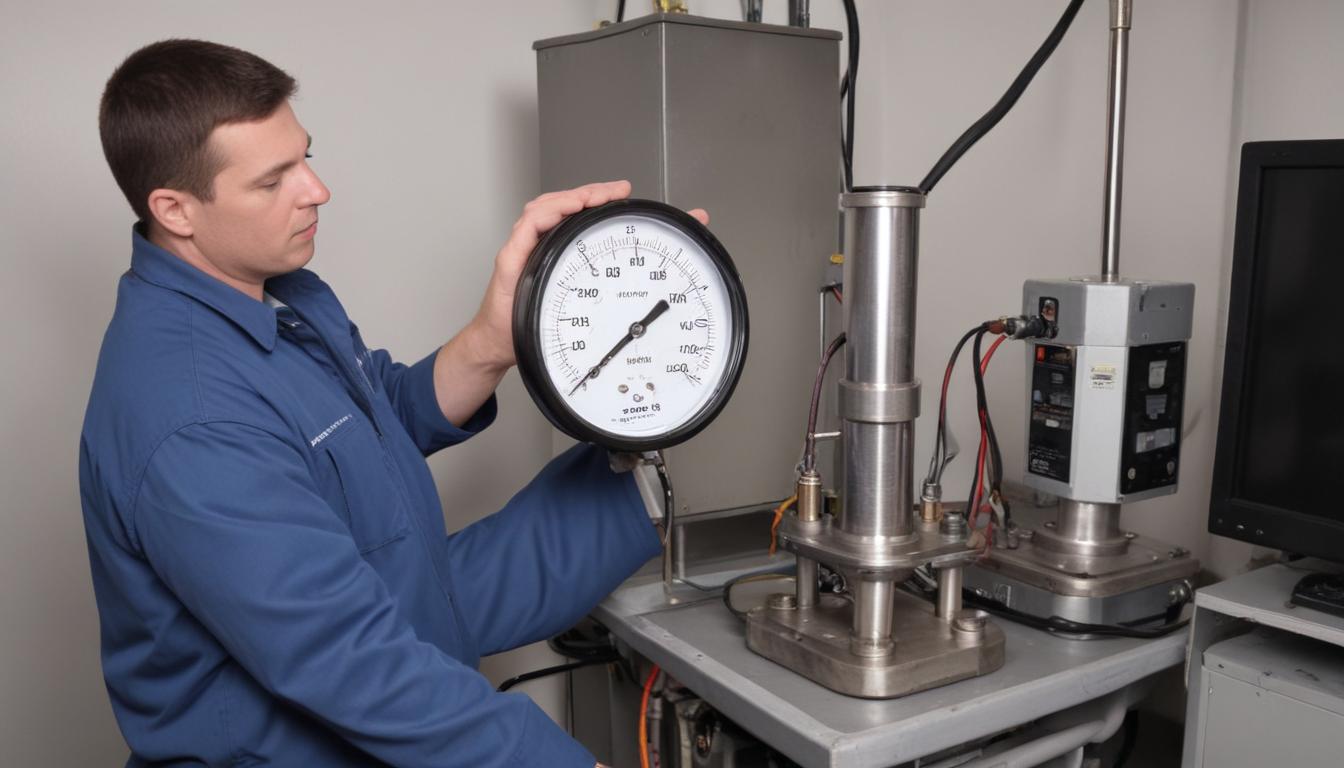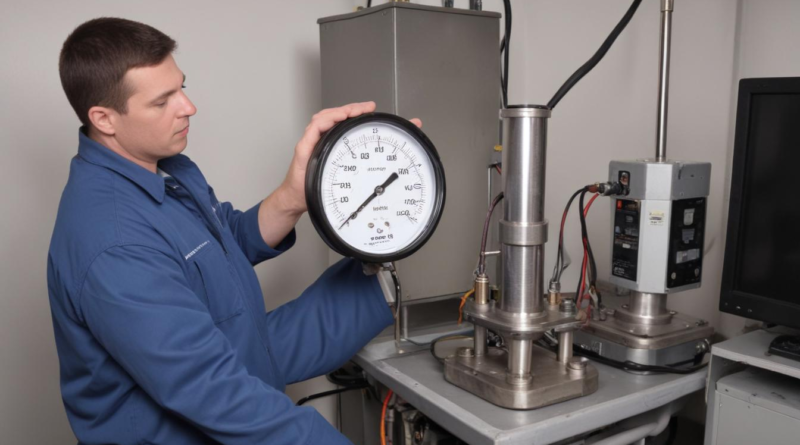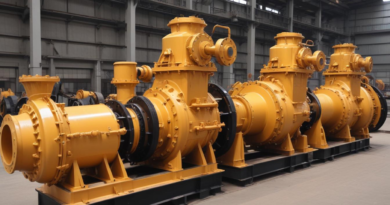how to perform pump leak testing
Pump leak testing is a critical procedure used to identify and assess leaks in various types of pumps, ensuring their optimal performance and longevity. This testing involves evaluating the integrity of pump seals, gaskets, and other components that prevent fluid from escaping during operation. By systematically detecting leaks, maintenance teams can address potential issues before they escalate into significant problems that may lead to costly downtime or equipment failure.
The importance of pump leak testing cannot be overstated. Regular testing helps maintain the efficiency of pump systems, reduces the risk of environmental contamination, and ensures compliance with safety and regulatory standards. Additionally, early detection of leaks can prevent energy loss, minimize product wastage, and extend the overall lifespan of the pump.
There are several methods employed in pump leak testing, each suited to different types of pumps and operational conditions. The primary methods include:
- Pressure Decay Testing: Involves pressurizing the pump system and monitoring the pressure over time. A drop in pressure indicates a potential leak.
- Helium Leak Detection: Utilizes helium as a tracer gas, which is introduced into the pump system. Specialized sensors detect the presence of helium outside the system, pinpointing the location of the leak.
- Bubble Testing: Applies a soapy solution to pump components while the system is pressurized. The formation of bubbles reveals the exact spot of leakage.
- Ultrasonic Testing: Uses ultrasonic sensors to detect high-frequency sound waves emitted by leaking fluids, allowing for non-invasive identification of leaks.
Each method offers unique advantages based on the specific requirements of the pump system and the nature of the fluid being handled. Selecting the appropriate testing technique ensures accurate detection and effective remediation of leaks, thereby maintaining the reliability and safety of pump operations.
Understanding pump leak testing encompasses not only the techniques used to identify leaks but also the underlying principles that govern pump functionality and integrity. By mastering these aspects, technicians can implement robust maintenance strategies that enhance the performance and durability of pumping systems across various industries.
required tools and equipment
Effective leak testing of pumps relies on a comprehensive set of tools and equipment designed to accurately detect and analyze leaks. Ensuring that all necessary instruments are available and in proper working condition is paramount to the success of the testing process. Below is a detailed overview of the essential tools and equipment required for pump leak testing:
| Tool/Equipment | Purpose |
|---|---|
| Pressure Gauges | Measure and monitor the internal pressure of the pump system to identify pressure drops indicative of leaks. |
| Leak Detection Fluid | A soapy solution applied to pump seals and joints; the formation of bubbles reveals the presence and location of leaks. |
| Helium Tracer Gas Kits | Utilized in advanced leak detection methods, helium serves as a tracer gas that can be detected with high sensitivity to pinpoint leak locations. |
| Ultrasonic Leak Detectors | Detect ultrasonic sound waves emitted by leaking fluids, allowing for non-invasive and precise identification of leak sources. |
| Calibration Tools | Ensure that all measurement instruments, such as pressure gauges and detectors, provide accurate and reliable readings during testing. |
| Personal Protective Equipment (PPE) | Includes gloves, safety goggles, and protective clothing to safeguard technicians during the testing process. |
| Data Logging Devices | Record pressure changes and detector readings over time, facilitating analysis and documentation of test results. |
| Toolkits for Seal and Gasket Replacement | Provide the necessary tools to replace faulty seals and gaskets identified during leak testing, ensuring the integrity of the pump system. |
In addition to the tools listed above, the importance of having specialized equipment tailored to the specific type of pump and the fluid being handled cannot be overlooked. For instance, pumps handling hazardous or high-pressure fluids may require more sensitive detection equipment and robust safety gear. Furthermore, regularly calibrating instruments and maintaining equipment ensures the reliability of the pump leak testing methods employed.
- Pressure Monitoring Systems: Automated systems that continuously track pressure levels, providing real-time data and alerts if pressure falls below predetermined thresholds.
- Portable Testing Kits: Allow technicians to perform leak tests in various locations and under different conditions without the need for extensive setup.
- Sealing Assessment Tools: Instruments that evaluate the condition of seals and gaskets, determining whether they meet the necessary standards or require replacement.
Proper organization and maintenance of these tools and equipment not only streamline the pump leak testing process but also enhance the accuracy and efficiency of leak detection. Investing in high-quality instruments and ensuring that technicians are trained in their proper use underscores the commitment to maintaining the reliability and safety of pump systems across diverse applications.
preparation steps
Proper preparation is essential to ensure the effectiveness and accuracy of the pump leak testing process. By meticulously following these steps, technicians can minimize errors, enhance safety, and achieve reliable results. Below is a comprehensive guide to the necessary preparation steps:
- Safety Precautions:
- Personal Protective Equipment (PPE): Ensure all technicians are equipped with appropriate PPE, including gloves, safety goggles, and protective clothing, to safeguard against potential hazards during testing.
- Lockout/Tagout Procedures: Implement lockout/tagout protocols to isolate the pump from the power source, preventing accidental startup or operation during the testing process.
- Ventilation: Verify that the testing area is well-ventilated, especially if testing involves volatile or hazardous fluids, to prevent the accumulation of harmful vapors.
- Review Documentation:
- Technical Manuals: Refer to the pump’s technical manuals and specifications to understand its operational parameters and design features.
- Previous Maintenance Records: Examine past maintenance and repair logs to identify any recurring issues or areas of concern that may affect the leak testing process.
- Inspect Pump Components:
- Visual Inspection: Conduct a thorough visual inspection of the pump, checking for any obvious signs of wear, corrosion, or damage to seals, gaskets, and other critical components.
- Cleanliness: Ensure that all parts of the pump are clean and free from debris or contaminants that could interfere with the testing procedures or compromise the results.
- Select Appropriate Leak Testing Method:
- Method Selection: Based on the pump type, fluid handled, and operational conditions, choose the most suitable leak testing method from options such as pressure decay, helium leak detection, bubble testing, or ultrasonic testing.
- Method Preparation: Prepare the selected method by gathering the necessary tools and configuring the equipment according to the manufacturer’s guidelines.
- Calibrate Testing Equipment:
- Calibration: Calibrate all measurement instruments, including pressure gauges and leak detectors, to ensure their accuracy and reliability. Use standardized calibration tools and follow calibration protocols meticulously.
- Verification: After calibration, verify the functionality of each device by conducting test readings to confirm they are operating within the specified parameters.
- Set Up the Testing Environment:
- Workspace Preparation: Organize the testing area to provide ample space for equipment setup and movement. Ensure that all necessary tools and materials are within easy reach.
- Environmental Controls: Maintain appropriate environmental conditions, such as temperature and humidity, to align with the testing requirements and avoid external factors that could affect the results.
- Establish Testing Parameters:
- Pressure Settings: Determine the appropriate pressure levels required for the specific pump and testing method, ensuring they do not exceed the pump’s operational limits.
- Duration: Define the duration of the test, including the time allotted for pressure stabilization and monitoring, to accurately detect any pressure changes indicative of leaks.
- Team Briefing and Roles:
- Assign Responsibilities: Clearly delineate the roles and responsibilities of each team member involved in the pump leak testing process to promote efficiency and accountability.
- Communication Protocols: Establish effective communication channels among team members to ensure smooth coordination and prompt reporting of any issues that arise during testing.
By diligently executing these preparation steps, the importance of pump leak testing is fully realized, ensuring that the testing is conducted safely, accurately, and efficiently. Proper preparation not only enhances the reliability of the testing methods employed but also contributes to the overall maintenance and longevity of the pump systems.
testing procedures
 The success of pump leak testing relies heavily on the meticulous execution of testing procedures. Adhering to a systematic approach ensures accurate detection of leaks and facilitates effective maintenance actions. Below is a comprehensive guide outlining the key steps involved in the testing procedures for pump leak testing:
The success of pump leak testing relies heavily on the meticulous execution of testing procedures. Adhering to a systematic approach ensures accurate detection of leaks and facilitates effective maintenance actions. Below is a comprehensive guide outlining the key steps involved in the testing procedures for pump leak testing:
- Initial System Pressurization:
- Shut Down Operations: Ensure the pump is completely shut down and isolated from the power source using lockout/tagout protocols.
- Seal Openings: Close all valves and seal any open connections to create a closed system environment suitable for pressurization.
- Introduce Test Medium: Depending on the selected method, introduce the appropriate test medium (e.g., air, nitrogen, helium) into the pump system to achieve the desired pressure level.
- Monitoring Pressure Stability:
- Set Pressure Gauges: Attach calibrated pressure gauges to monitor the internal pressure of the pump system continuously.
- Observe Pressure Levels: Allow the system to stabilize and observe the pressure readings over a predetermined period. A stable pressure indicates no significant leaks, while a decline suggests potential leakage.
- Record Data: Utilize data logging devices to capture pressure changes over time, providing valuable information for analysis.
- Application of Leak Detection Method:
- Pressure Decay Testing:
- Procedure: After pressurizing the system, monitor the pressure over a set duration. Calculate the rate of pressure loss to determine the presence and severity of leaks.
- Advantages: Simple and cost-effective method suitable for various pump types.
- Helium Leak Detection:
- Procedure: Introduce helium into the pump system and use a mass spectrometer or specialized detector to identify helium escaping from potential leak points.
- Advantages: Highly sensitive and capable of detecting very small leaks, ideal for critical applications.
- Bubble Testing:
- Procedure: Apply a soapy solution to pump seals, joints, and connections while the system is pressurized. Observe for the formation of bubbles, which indicate leak locations.
- Advantages: Visual method that is easy to perform and does not require specialized equipment.
- Ultrasonic Testing:
- Procedure: Use an ultrasonic leak detector to scan the pump components. Leaks emit high-frequency sound waves that the detector identifies and pinpoints.
- Advantages: Non-invasive and capable of detecting leaks without interrupting pump operations.
- Pressure Decay Testing:
- Leak Localization and Verification:
- Identify Leak Sources: Based on the data obtained from the chosen method, locate the exact points where leaks are occurring.
- Verify Leak Integrity: Confirm the existence of leaks by cross-referencing multiple detection methods or performing repeat tests to ensure reliability.
- Document Findings: Maintain detailed records of leak locations, sizes, and affected components for future reference and maintenance planning.
- System Depressurization and Restoration:
- Gradual Depressurization: Carefully release the pressure from the pump system to prevent sudden changes that could cause damage or safety hazards.
- Ventilation: Ensure that any residual test medium is safely vented from the testing area, adhering to safety and environmental regulations.
- Restore Pump Operations: Reopen valves, remove seals, and re-energize the pump system, returning it to normal operational status.
- Post-Test Inspection:
- Inspect Repaired Areas: After addressing identified leaks, perform a thorough inspection to ensure that all repairs are secure and effective.
- Final Leak Test: Conduct a subsequent leak test to verify that all leaks have been successfully sealed and that the pump system maintains pressure integrity.
- Update Maintenance Records: Record all actions taken during the leak testing process, including repairs and final test results, to maintain comprehensive maintenance history.
| Testing Method | Key Steps | Advantages |
|---|---|---|
| Pressure Decay Testing |
|
Simple, cost-effective, suitable for various pump types. |
| Helium Leak Detection |
|
Highly sensitive, detects very small leaks. |
| Bubble Testing |
|
Visual, easy to perform, no specialized equipment required. |
| Ultrasonic Testing |
|
Non-invasive, allows detection without interrupting operations. |
Implementing these testing procedures with precision underscores the importance of maintaining pump integrity and operational efficiency. By following a structured approach and utilizing the appropriate methods, technicians can effectively identify and address leaks, thereby ensuring the reliability and longevity of pump systems across various industrial applications.
interpreting and addressing results
After completing the pump leak testing procedures, it is essential to accurately interpret the collected data to determine the integrity of the pump system and decide on the necessary corrective actions. Effective interpretation not only ensures the reliability of the pump but also highlights the importance of maintaining optimal operational standards. The following guidelines outline the key steps and considerations in interpreting and addressing the results of pump leak testing:
- Analyze Pressure Data:
- Pressure Decay Analysis: Examine the rate at which pressure decreases over the testing period. A slower rate may indicate minor leaks or system compliance, while a rapid drop suggests significant leakage.
- Baseline Comparison: Compare the current pressure readings with historical data and manufacturer specifications to identify deviations that may indicate emerging issues.
- Threshold Evaluation: Determine if the pressure loss falls within acceptable limits defined by industry standards or operational guidelines. Exceeding these thresholds necessitates immediate attention.
- Evaluate Detection Method Results:
- Helium Leak Detection: Assess the concentration levels of helium detected outside the pump system. Higher concentrations typically correlate with more severe leaks.
- Bubble Testing: Identify the exact locations where bubbles form. The size and number of bubbles can help gauge the leak size.
- Ultrasonic Testing: Review the ultrasonic frequency readings to determine the presence and intensity of leaks. Higher frequencies may indicate smaller or more discreet leaks.
- Categorize Leak Severity:
Leak Severity Description Recommended Action Minor Leak Small pressure loss or minimal detection signals indicating a minor leak. Monitor the leak and schedule maintenance during the next routine service. Moderate Leak Noticeable pressure drop or consistent detection signals requiring prompt attention. Perform immediate repairs to prevent escalation and potential system failure. Severe Leak Rapid pressure loss or significant detection signals indicating a major leak. Shut down the pump system if necessary and undertake urgent repairs to avoid safety hazards and operational downtime. - Identify Leak Sources:
- Component Inspection: Utilize the data from the leak detection methods to pinpoint the exact location of the leak, whether it’s a seal, gasket, or another component.
- Root Cause Analysis: Investigate underlying causes such as wear and tear, improper installation, material degradation, or operational stress that may have led to the leak.
- Documentation: Record the precise locations and conditions of the leaks to assist in planning effective remediation strategies.
- Develop Remediation Plans:
- Repair or Replace Components: Based on the severity and source of the leak, decide whether to repair the existing components or replace them entirely to restore pump integrity.
- Implement Corrective Measures: Address any identified root causes to prevent recurrence. This may involve adjusting operational parameters, enhancing maintenance schedules, or upgrading materials used in pump construction.
- Re-Test After Repairs: Conduct subsequent leak tests to ensure that the repairs have effectively resolved the leakage issues and that the pump system is functioning correctly.
- Update Maintenance Records:
- Detailed Reporting: Document all findings, actions taken, and outcomes of the leak testing process. This includes the type of leaks detected, their locations, severity, and the measures implemented to address them.
- Trend Analysis: Use the recorded data to identify patterns or recurring issues that may indicate systemic problems within the pump system or operational processes.
- Continuous Improvement: Leverage the insights gained from the testing results to enhance future leak testing methods and overall maintenance strategies, thereby improving the reliability and efficiency of pump operations.
Addressing the results of pump leak testing with a structured and thorough approach ensures that any detected leaks are managed effectively, maintaining the integrity and performance of the pump system. By systematically interpreting the data and implementing appropriate corrective actions, organizations can minimize the risk of operational disruptions, extend the lifespan of their equipment, and uphold safety and environmental standards.



